Tips For Designing A Pool With Natural Elements
In recent years, the trend of incorporating natural elements into home design has surged in popularity. Homeowners are increasingly looking to create serene, eco-friendly spaces that offer a respite from the hustle and bustle of daily life. One area where this trend is particularly evident is in pool design. Natural pools, which use plants and biofilters instead of chlorine and other chemicals, are becoming a sought-after feature for modern homes. This blog post will guide you through the essentials of designing a natural pool, ensuring it becomes a beautiful and functional part of your home.
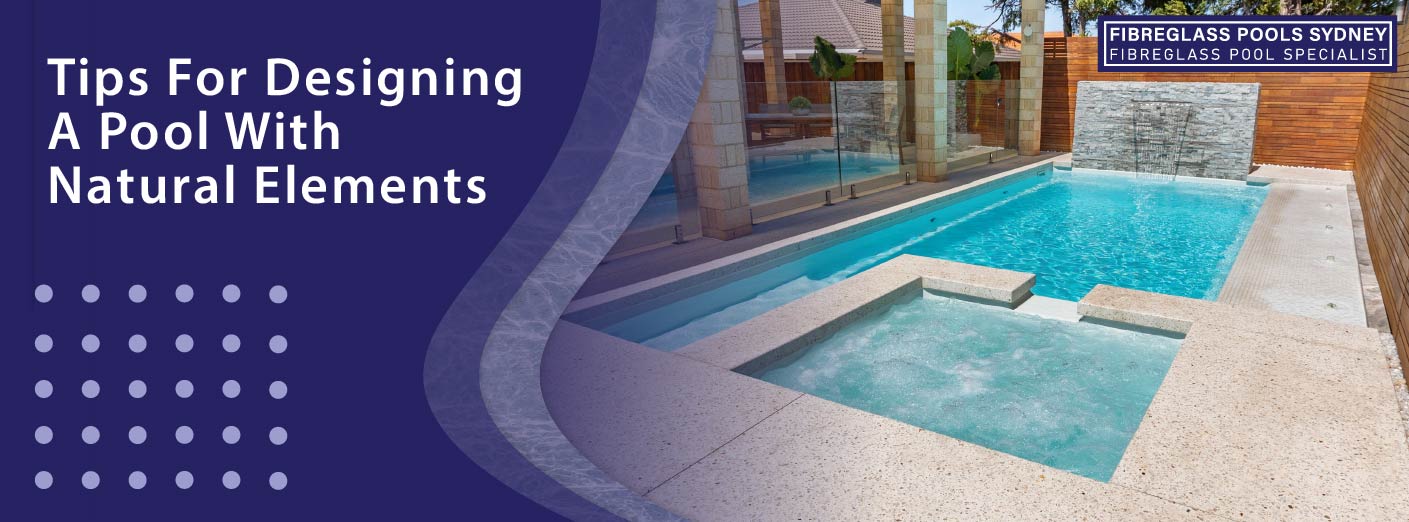
The Benefits of Natural Pool Design
Mental and Physical Health Benefits
Natural pools provide several mental and physical health benefits compared to conventional chlorine pools. Swimming in a natural pool means you’re not exposed to harsh chemicals that can irritate the skin, eyes, and respiratory system. Instead, the water is filtered by plants and microorganisms, making it gentler on your body. Plus, natural elements like plants and stones can have a calming effect, reducing stress and promoting well-being.
Environmental Benefits
A major advantage of a natural pool is its positive environmental impact. Traditional pools use chemicals that can harm local ecosystems when they enter health benefits or natural bodies of water. In contrast, natural pools use plants and biological filters to clean the water, creating a mini-ecosystem that supports local wildlife. This eco-friendly approach reduces your environmental footprint and creates a sustainable and beautiful outdoor space.
Cost Savings
While the initial cost of installing a natural pool may be higher, the long-term savings are significant. Natural pools require less maintenance and fewer chemicals, reducing ongoing costs. They also use natural filtration systems, often requiring less energy to operate. Over time, these savings can make a natural pool a cost-effective investment for homeowners.
Planning Your Natural Pool
Selecting the Right Location
Choosing the right location is the first step in designing a natural pool. The pool should ideally be in an area with ample sunlight to support the growth of aquatic plants crucial for water filtration. Also, consider the natural slope and drainage patterns of your yard to ensure proper water flow and minimise erosion.
Determining the Size and Shape
The size and shape of your pool should complement your home’s architecture and fit within the available space. Smaller yards may benefit from a compact, pond-like design, while larger properties can accommodate more expansive pools. Consider how you plan to use the pool—whether for swimming laps, relaxing, or entertaining—to determine the appropriate dimensions.
Integrating with Your Lifestyle
Your pool should reflect your lifestyle and preferences. If you enjoy gardening, incorporate a variety of aquatic plants that require regular care. If you prefer low-maintenance options, choose hardy plant species and automated filtration systems. The key is to create a space that enhances your daily life and provides a sanctuary for relaxation and recreation.
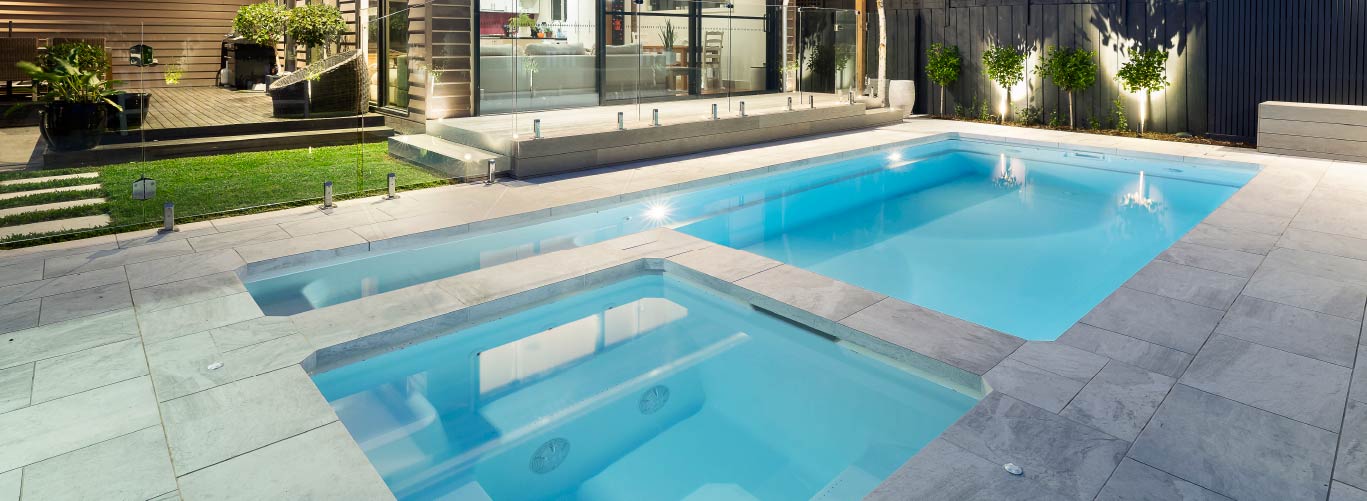
Incorporating Natural Elements
Adding Plants
Plants are crucial for any natural pool. They filter the water and add beauty and texture to the landscape. Water lilies, reeds, and submerged plants like hornwort are excellent choices. These plants oxygenate the water, control algae growth, and provide habitat for beneficial microorganisms.
Using Stones and Rocks
Incorporating stones and rocks can create a more natural look. Large boulders can serve as focal points, while smaller stones can line the pool’s edges or form pathways. Rocks can also create waterfalls or streams, adding movement and sound. Choose local materials that blend seamlessly with your existing landscape.
Natural Filtration Systems
A natural pool needs an effective filtration system. Biological filters, such as gravel beds and plant-based filters, keep the water clean. These systems mimic natural processes, using beneficial bacteria to break down organic matter and remove impurities. Combining mechanical and biological filters helps maintain clear, healthy water with minimal chemical use.
Maintenance Made Easy
Seasonal Care
Maintaining a natural pool requires seasonal care, but it’s generally less intensive than a traditional pool. In spring and summer, monitor plant growth and remove dead vegetation. In fall, clear leaves and debris to prevent decomposition. Winter maintenance involves protecting plants from freezing and keeping the filtration system operational.
Water Quality Management
Water quality is crucial in a natural pool. Regular testing helps monitor pH levels, nutrients, and microbial activity. Unlike traditional pools that use chemicals, natural pools rely on plants and biological processes. Balancing plant life and swimming areas ensures optimal conditions.
Algae Control
Algae can be an issue in natural pools but can be managed with proper care. Introducing algae-eating fish like goldfish or koi helps control growth. Ensuring adequate sunlight and circulation also prevents algae. Regularly cleaning surfaces and removing debris contribute to a cleaner pool.
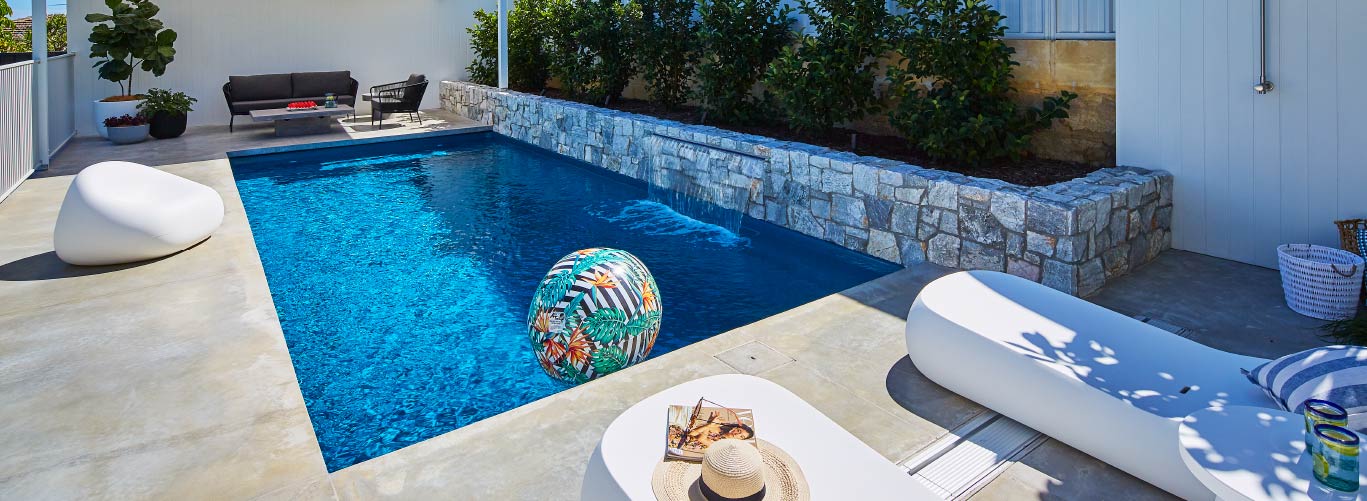
The Aesthetic Touch
Outdoor Furniture
Enhancing your natural pool’s beauty involves more than just water and plants. Carefully chosen outdoor furniture creates inviting spaces for relaxation and socialising. Choose weather-resistant materials like teak, aluminium, or synthetic wicker. Add comfortable seating like lounge chairs or hammocks, and include shaded areas with umbrellas or pergolas.
Lighting
Proper lighting transforms your pool area into a magical evening retreat. Solar-powered lights are eco-friendly and can be placed around the pool’s perimeter or among plants for a soft, ambient glow. Underwater LED lights highlight features like waterfalls or steps, adding depth and drama. The right lighting enhances safety and aesthetics, making your pool usable day and night.
Additional Design Elements
Adding design elements can elevate your natural pool’s aesthetic appeal. Consider decorative features like mosaic tiles, sculptures, or garden art to personalise the space. Natural pathways made from stone or wood guide visitors through the landscape, creating a sense of exploration. The goal is a harmonious blend of natural beauty and functional design.
Designing a pool with natural elements offers numerous benefits, from improved health and environmental sustainability to cost savings and aesthetic appeal. By incorporating plants, stones, and natural filtration systems, you can create a serene oasis that enhances your home’s value and provides a sanctuary for relaxation and recreation. Whether you’re just beginning to plan your natural pool or looking to enhance an existing one, these tips will help you create a beautiful, functional space that reflects your lifestyle and values. Explore more about natural pool design and start transforming your backyard today.
Tips For Designing A Pool With Natural Elements
In recent years, the trend of incorporating natural elements into home design has surged in popularity. Homeowners are increasingly looking to create serene, eco-friendly spaces that offer a respite from the hustle and bustle of daily life. One area where this trend is particularly evident is in pool design. Natural pools, which use plants and biofilters instead of chlorine and other chemicals, are becoming a sought-after feature for modern homes. This blog post will guide you through the essentials of designing a natural pool, ensuring it becomes a beautiful and functional part of your home.
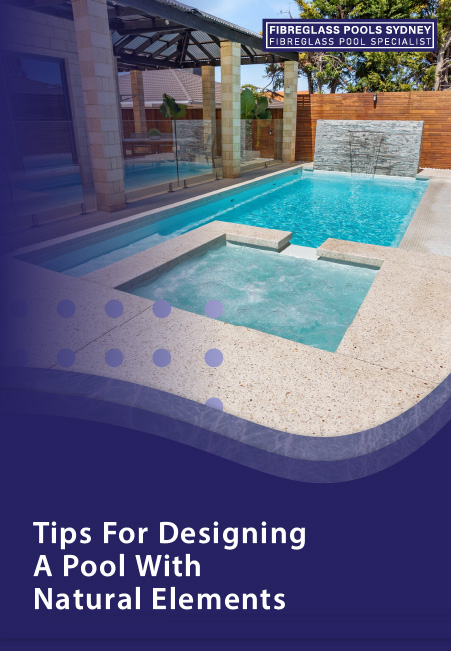
The Benefits of Natural Pool Design
Mental and Physical Health Benefits
Natural pools provide several mental and physical health benefits compared to conventional chlorine pools. Swimming in a natural pool means you’re not exposed to harsh chemicals that can irritate the skin, eyes, and respiratory system. Instead, the water is filtered by plants and microorganisms, making it gentler on your body. Plus, natural elements like plants and stones can have a calming effect, reducing stress and promoting well-being.
Environmental Benefits
A major advantage of a natural pool is its positive environmental impact. Traditional pools use chemicals that can harm local ecosystems when they enter groundwater or natural bodies of water. In contrast, natural pools use plants and biological filters to clean the water, creating a mini-ecosystem that supports local wildlife. This eco-friendly approach reduces your environmental footprint and creates a sustainable and beautiful outdoor space.
Cost Savings
While the initial cost of installing a natural pool may be higher, the long-term savings are significant. Natural pools require less maintenance and fewer chemicals, reducing ongoing costs. They also use natural filtration systems, often requiring less energy to operate. Over time, these savings can make a natural pool a cost-effective investment for homeowners.
Planning Your Natural Pool
Selecting the Right Location
Choosing the right location is the first step in designing a natural pool. The pool should ideally be in an area with ample sunlight to support the growth of aquatic plants crucial for water filtration. Also, consider the natural slope and drainage patterns of your yard to ensure proper water flow and minimise erosion.
Determining the Size and Shape
The size and shape of your pool should complement your home’s architecture and fit within the available space. Smaller yards may benefit from a compact, pond-like design, while larger properties can accommodate more expansive pools. Consider how you plan to use the pool—whether for swimming laps, relaxing, or entertaining—to determine the appropriate dimensions.
Integrating with Your Lifestyle
Your pool should reflect your lifestyle and preferences. If you enjoy gardening, incorporate a variety of aquatic plants that require regular care. If you prefer low-maintenance options, choose hardy plant species and automated filtration systems. The key is to create a space that enhances your daily life and provides a sanctuary for relaxation and recreation.
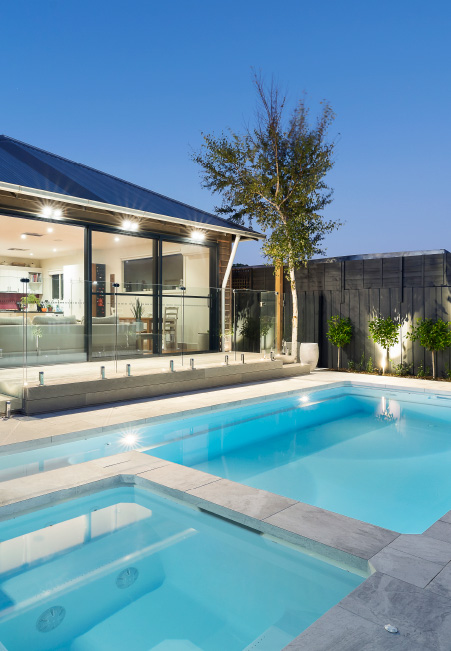
Incorporating Natural Elements
Adding Plants
Plants are crucial for any natural pool. They filter the water and add beauty and texture to the landscape. Water lilies, reeds, and submerged plants like hornwort are excellent choices. These plants oxygenate the water, control algae growth, and provide habitat for beneficial microorganisms.
Using Stones and Rocks
Incorporating stones and rocks can create a more natural look. Large boulders can serve as focal points, while smaller stones can line the pool’s edges or form pathways. Rocks can also create waterfalls or streams, adding movement and sound. Choose local materials that blend seamlessly with your existing landscape.
Natural Filtration Systems
A natural pool needs an effective filtration system. Biological filters, such as gravel beds and plant-based filters, keep the water clean. These systems mimic natural processes, using beneficial bacteria to break down organic matter and remove impurities. Combining mechanical and biological filters helps maintain clear, healthy water with minimal chemical use.
Maintenance Made Easy
Seasonal Care
Maintaining a natural pool requires seasonal care, but it’s generally less intensive than a traditional pool. In spring and summer, monitor plant growth and remove dead vegetation. In fall, clear leaves and debris to prevent decomposition. Winter maintenance involves protecting plants from freezing and keeping the filtration system operational.
Water Quality Management
Water quality is crucial in a natural pool. Regular testing helps monitor pH levels, nutrients, and microbial activity. Unlike traditional pools that use chemicals, natural pools rely on plants and biological processes. Balancing plant life and swimming areas ensures optimal conditions.
Algae Control
Algae can be an issue in natural pools but can be managed with proper care. Introducing algae-eating fish like goldfish or koi helps control growth. Ensuring adequate sunlight and circulation also prevents algae. Regularly cleaning surfaces and removing debris contribute to a cleaner pool.
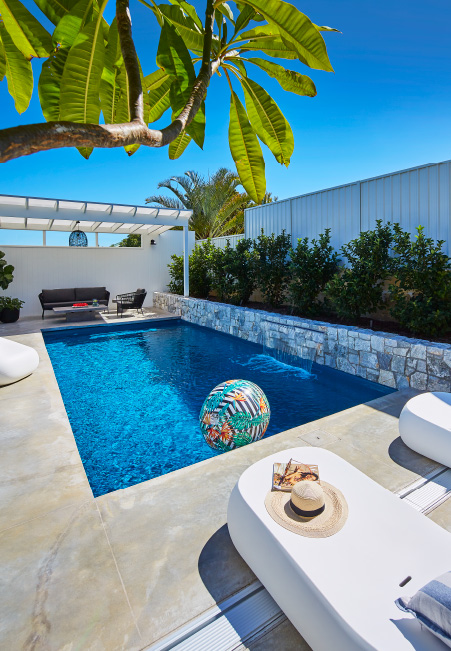
The Aesthetic Touch
Outdoor Furniture
Enhancing your natural pool’s beauty involves more than just water and plants. Carefully chosen outdoor furniture creates inviting spaces for relaxation and socialising. Choose weather-resistant materials like teak, aluminium, or synthetic wicker. Add comfortable seating like lounge chairs or hammocks, and include shaded areas with umbrellas or pergolas.
Lighting
Proper lighting transforms your pool area into a magical evening retreat. Solar-powered lights are eco-friendly and can be placed around the pool’s perimeter or among plants for a soft, ambient glow. Underwater LED lights highlight features like waterfalls or steps, adding depth and drama. The right lighting enhances safety and aesthetics, making your pool usable day and night.
Additional Design Elements
Adding design elements can elevate your natural pool’s aesthetic appeal. Consider decorative features like mosaic tiles, sculptures, or garden art to personalise the space. Natural pathways made from stone or wood guide visitors through the landscape, creating a sense of exploration. The goal is a harmonious blend of natural beauty and functional design.
Designing a pool with natural elements offers numerous benefits, from improved health and environmental sustainability to cost savings and aesthetic appeal. By incorporating plants, stones, and natural filtration systems, you can create a serene oasis that enhances your home’s value and provides a sanctuary for relaxation and recreation. Whether you’re just beginning to plan your natural pool or looking to enhance an existing one, these tips will help you create a beautiful, functional space that reflects your lifestyle and values. Explore more about natural pool design and start transforming your backyard today.



